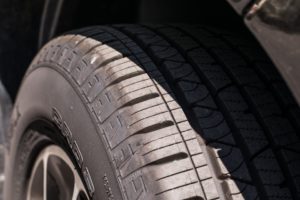
Tire inspections are a necessary part of your car safety routine. But don’t let the inspection process intimidate you—here’s how to do them safely and effectively. You can bring your vehicle in, and we can inspect the tires for you as well. Even if you notice a slight issue, always make sure to have them checked. Also follow some of these tips to help ensure your tires are in the best condition that they can be in when you drive.
Tire Inspections and What to do
A tire inspection is a safety check of your tires that will help you determine if they are in good condition and safe to travel on. To do a tire inspection, you will need to:
- Get your car or truck ready for the inspection by checking the oil level and filter status, and cleaning any obstructions from the air intake or exhaust system.
- Remove the original tires and inspect them for cracks or damage.
- Check the inflation pressure of all tires and replace if necessary.
- Look for any signs of wear (check tread depth, sidewall thickness, etc.) and replace if needed as needed.
- Inspect the brake pads and rotors to make sure they are in good condition and not rusting or corroding; this can cause braking problems on future trips.
- Check the fluid levels in all fluids (including brakes) and replace if necessary; it’s important to keep brakes clean so they can work properly during travel).
- Replace any loose screws or bolts that may be present in your car or truck’s panels or other parts.
Checking Tread Wear
You can use the tire inspection results to improve your driving experience by learning about potential problems with your tires. For example, if you find that one of your tires is low on air pressure, you should replace it as soon as possible. You can also check the tread depth and surface condition of your tires to determine whether they need to be replaced or repaired.
Check the tread wear by using just a penny. Place it upside down in the groove of the tire. Do this for each tire to help ensure that the tread is correct and wearing evenly. If there is a tires with poor tread wear, make sure to contact us. Depending on the remaining condition, it may be beneficial to rotate the tires. Also be aware how the vehicle handles when you are driving it. If it starts to pull in one direction, it could be from poor tread wear. No matter the case, it is always beneficial to have the vehicle and tires inspected. Tire inspections are a critical part of driving safely. By getting a tire inspection, you can improve your driving experience and be sure that your tires are in safe condition.
Recent Comments